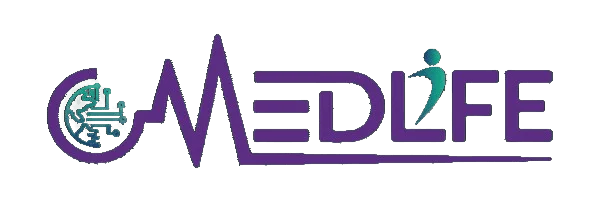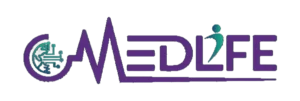Choosing the Right Billing Software Can Make or Break Your Practice’s Financial Health
Medical billing can be a major pain point for any healthcare practice especially small practices with limited administrative resources. Recent data from the Healthcare Financial Management Association (HFMA, 2024) suggests that inefficient billing processes can cost small practices over $25,000 annually and increase staff burnout rates by 40%. The good news? The right medical billing software can help you avoid these pitfalls, streamline your revenue cycle, and keep your practice’s finances in excellent shape.
In this updated 2024/25 guide, we’ll explore everything you need to know about medical billing software for Healthcare Providers, including must-have features, top vendor comparisons, and tips for a successful implementation. Let’s dive in!
1. Why Medical Billing Software Matters for Small Practices
1.1 Boost Revenue and Cash Flow
Studies indicate that choosing an effective billing solution can improve collection rates by up to 25%. This isn’t just about sending statements; it’s about reducing claim denials, speeding up insurance verifications, and ensuring timely reimbursements.
1.2 Reduce Administrative Overload
Most small practices juggle multiple responsibilities with minimal staff. Automation in billing tasks—like claim submission, electronic remittances, and payment posting—can save your team up to 40% of their time.
1.3 Fewer Errors and Denials
Manual data entry and coding errors are the leading causes of claim denials. A robust billing platform with automated claim scrubbing can reduce denial rates by as much as 30%, ultimately saving thousands in lost revenue.
1.4 Real-Time Insights
Modern billing software typically comes with built-in analytics and dashboards, offering real-time snapshots of your practice’s financial health. From daily deposit reports to payer-specific denial rates, these insights help you make informed decisions faster.
1.5 Compliance and Security
Compliance with HIPAA and other healthcare regulations is critical. Cloud-based, HIPAA-compliant software provides secure data storage, automated backups, and safe payment processing, protecting both patient information and your practice’s reputation.
2. Must-Have Features in Medical Billing Software
Selecting the right billing system depends on your practice’s size, specialty, and specific needs. However, certain core features are non-negotiable:
- Automated Claim Submission and Tracking
- Real-time insurance eligibility checks
- Automated claim scrubbing for accurate coding
- Dashboard to track claim status (submitted, pending, paid, or denied)
- Electronic Remittances and Payment Posting
- Auto-posting features to simplify reconciliations
- Acceptance of multiple payment methods (credit card, ACH, etc.)
- Integration with practice bank accounts or merchant services
- Appointment Scheduling and Patient Management
- Unified calendar that syncs with billing records
- Automated patient reminders (email, text)
- Easy check-in/check-out workflows
- Reporting and Analytics
- Customizable financial reports (outstanding AR, payer mix, denial trends)
- KPI dashboards for daily, weekly, and monthly updates
- Tools for forecasting revenue and comparing performance metrics
- Integration with EHR/EMR
- Seamless data sharing between clinical and billing systems
- Fewer errors from manual data transfers
- Better compliance through a unified platform
- Scalability and Cloud Access
- Cloud-based solutions that grow with your practice
- HIPAA-compliant data centers for secure record storage
- 24/7 access to financial data from any location
- User-Friendly Interface and Support
- Intuitive layout with minimal learning curve
- Comprehensive training materials and live customer support
- Regular software updates and new feature rollouts
3. Top 10 Billing Software Solutions for Small Healthcare Providers(2025)
Below, we compare 10 standout billing solutions. Each one is specifically vetted for small practice requirements, offering a balanced mix of affordability, functionality, and user-friendliness.
1 Kareo – Best Overall for All
- Why It Stands Out: Kareo maintains a 99.4% clean claims rate, translating to fewer denials and faster reimbursement. Its user-friendly dashboard helps you manage claims, patient billing, and scheduling in one place.
- Key Features:
- Real-time insurance verification
- Built-in analytics with daily deposit reports
- Robust claim-scrubbing tools
- Ideal For: Solo practitioners, and small group practices looking for a comprehensive yet simple interface
2 AdvancedMD – Most Comprehensive Platform
- Why It Stands Out: With a 95% first-pass claim acceptance rate, AdvancedMD excels in helping small practices expand. The built-in analytics engine gives deep insights into financial performance.
- Key Features:
- Integrated EHR and practice management tools
- AI-driven code suggestions and error reductions
- Automated patient communications
- Ideal For: Growing practices needing advanced reporting and customization
3 DrChrono – Best Integrated EHR and Billing
- Why It Stands Out: DrChrono merges EHR, scheduling, and billing in one cloud-based system. Practices report a 48% reduction in billing errors thanks to real-time coding alerts.
- Key Features:
- Mobile-first approach (iPad and iPhone apps)
- Built-in e-prescribing and telehealth modules
- Automated claim submission workflows
- Ideal For: Practices seeking a modern, mobile-friendly experience
4 PracticeSuite – Most Cost-Effective
- Why It Stands Out: PracticeSuite offers enterprise-level features at a fraction of the cost. A robust verification system catches over 90% of claim errors before submission.
- Key Features:
- Multi-provider support with consolidated billing
- Patient portal for statement access and online payments
- Dynamic reporting for real-time financial insights
- Ideal For: Budget-conscious practices and start-ups
5 SimplePractice – Best for Behavioral Health
- Why It Stands Out: Focused on mental health providers, SimplePractice users see a 27% boost in successful claim submissions. The straightforward design requires minimal training.
- Key Features:
- Specialized therapy billing codes
- Secure client portal for scheduling and payments
- Guided claim filing wizard
- Ideal For: Solo or small group behavioural health practices
6 CareCloud – Superior Cloud Performance
- Why It Stands Out: Boasts 99.99% uptime and HIPAA-compliant cloud storage. A dynamic rules engine processes claims 40% faster than manual methods.
- Key Features:
- Interactive dashboards with revenue cycle tracking
- Seamless integration with existing EHR systems
- Customizable workflows and templates
- Ideal For: Practices needing high reliability and speed
- Learn More: Visit CareCloud
7 NextGen Healthcare – Best for Automation
- Why It Stands Out: NextGen Healthcare’s AI-driven system reduces manual data entry by 65%. Advanced automation tools can save small practices up to 15 hours a week.
- Key Features:
- Intelligent coding suggestions
- Real-time denial management with auto-resubmission
- Customizable patient engagement portals
- Ideal For: Small to mid-sized practices wanting to minimize manual tasks
8 EZClaim – Most User-Friendly
- Why It Stands Out: Designed with simplicity in mind, EZClaim users typically learn the system within 2-3 training sessions. Offers robust functionalities without overwhelming novices.
- Key Features:
- Step-by-step claim filing wizard
- QuickRemit tool for streamlined payment posting
- Batch processing for faster clearinghouse submissions
- Ideal For: Practices new to electronic billing or with minimal tech staff
9 TheraNest – Specialized for Mental Health
- Why It Stands Out: Built for mental health clinics, TheraNest includes specialized forms, codes, and telehealth integrations. Users see a 35% reduction in denied claims.
- Key Features:
- Customizable therapy notes and progress reports
- Automated statement generation and reminders
- HIPAA-compliant client portal for scheduling
- Ideal For: Behavioral health providers needing specialized workflows
10 Greenway Health – Highly Customizable
- Why It Stands Out: Greenway Health has over 500 customizable features, that enable you to tailor workflows to your exact specialty. A 98% clean claims rate ensures minimal rework.
- Key Features:
- Adaptable dashboards for real-time analytics
- Multi-location support for group practices
- Integrated telehealth and e-prescribing
- Ideal For: Practices with diverse needs or plans to expand service lines
4. How to Choose the Right Software for Your Practice
- Evaluate Your Specialty
If your practice is focused on behavioural health, for example, you’ll want a system like TheraNest or SimplePractice with specialized codes. General or multi-specialty offices might find more value with AdvancedMD or Kareo. For additional insights. - Integration Is Key
Systems that connect with your existing EHR or telehealth solutions can reduce data entry errors by 35%. Double-check the vendor’s integration capabilities before committing. - Check Scalability and Budget
- Cost Structures: Some solutions have a flat monthly fee; others charge a percentage of collections. Make sure you pick a plan that aligns with your financial model.
- Scalability: If you plan on growing from a solo practice to a multi-provider clinic, ensure your billing software can scale without hidden costs or system migration hassles.
- Implementation and Support
About 40% of small practice software failures come from insufficient training. Confirm that your vendor offers hands-on support, comprehensive training modules, and a responsive help desk. - Security and Compliance
Insist on HIPAA, HITECH, and PCI-DSS compliance for safe payment processing. Cloud-based solutions often provide automated backups and encryption, minimizing risk and liability for your practice.
5. Best Practices for Implementing Your New Billing Software
- Start with a Pilot Phase
Test the software with one or two staff members before rolling it out to your entire team. - Clean Up Existing Data
Ensure patient demographics, insurance details, and coding references are up-to-date to avoid migration errors. - Offer Team Training
Organize thorough training sessions for front desk staff, billers, and even providers. - Monitor KPIs Early
Track metrics like days in AR, first-pass acceptance, and clean claims rate to gauge immediate benefits. - Request Feedback
Encourage your billing and administrative teams to share ongoing feedback to refine workflows.
6. Bottom Line: Set Your Practice Up for Financial Success
Medical billing software isn’t just an administrative tool—it’s a financial lifeline for small practices. The right system helps reduce denials, speeds up reimbursements, and provides the data-driven insights you need to make informed business decisions.
At MedLifembs (internal link), we understand the complexities of selecting and implementing the perfect solution. Our experts are here to help you evaluate different platforms, streamline your billing processes, and boost your practice’s revenue.
Ready to Make the Switch?
Contact our team (internal link) today to explore how we can guide you through the selection process, provide hands-on implementation support, and ensure your small practice reaps maximum benefits from your new billing software.


